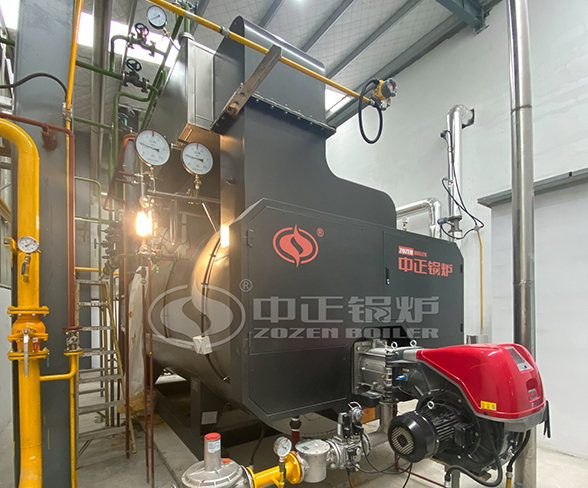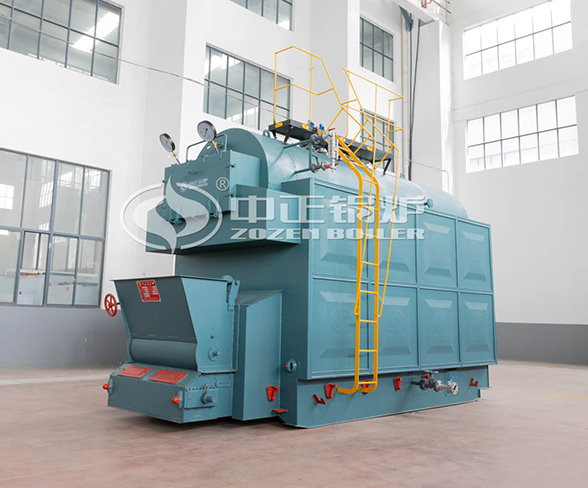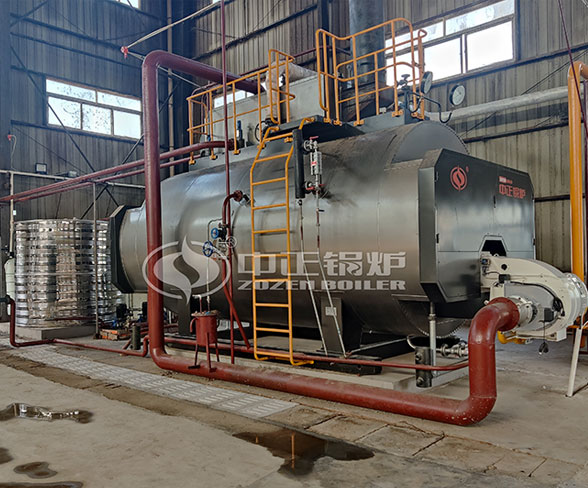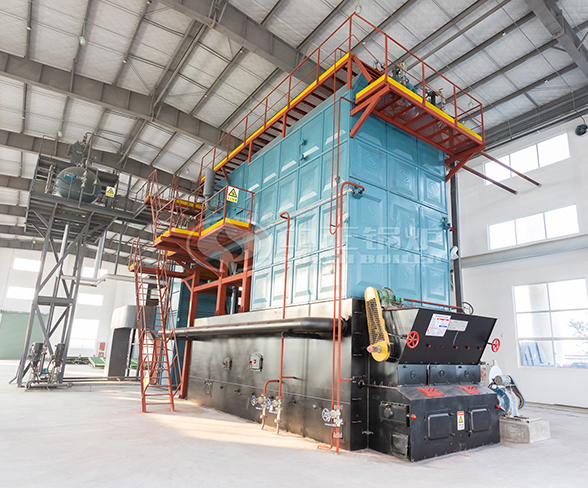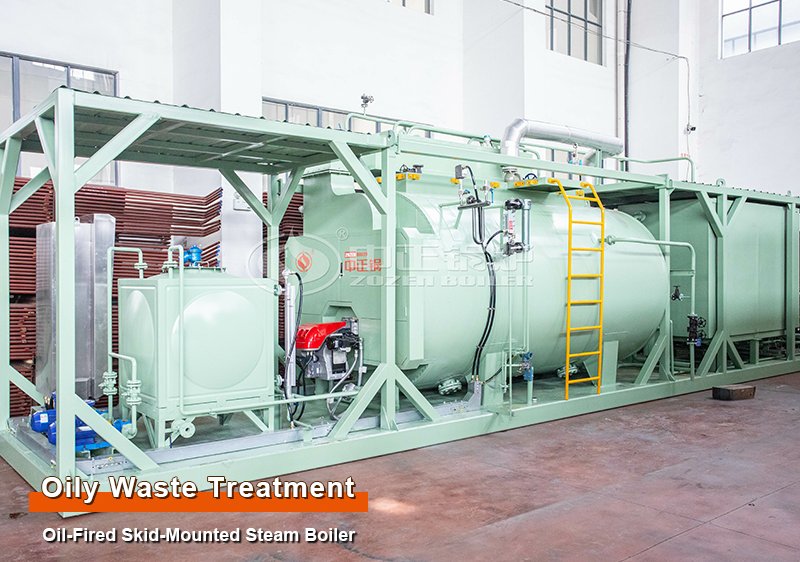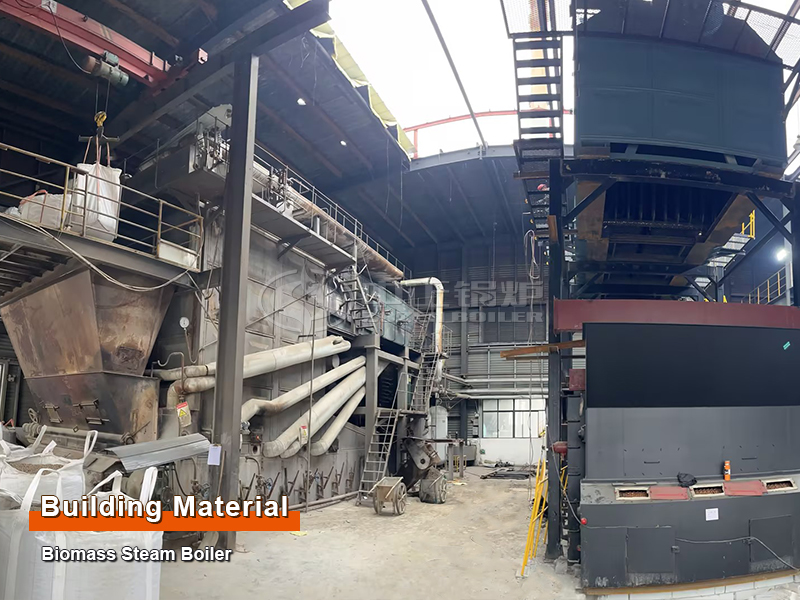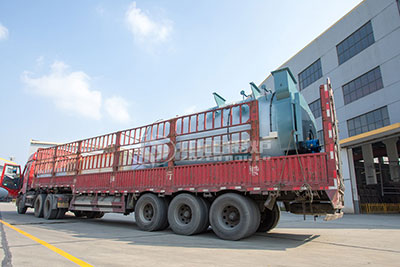Introduction:
In the domain of industrial boilers, ZOZEN Boiler unveils a detailed examination of two types of water tube boilers: the D-type and KB-type designs, shedding light on their structural principles and unique characteristics.
What is the structure of a D-Type Water Tube Boiler?
As one of types of water tube boilers, D-type water tube boiler features a furnace on the right and a convection tube bundle on the left. Anchored by movable supports at the center and ends of the lower drum, this design ensures overall boiler expansion towards both ends. Surrounded by membrane water-cooled walls, the furnace enhances airtightness and heat transfer efficiency. Notable models include the SZS series oil and gas boilers, offering evaporation capacities ranging from 2 to 130t/h and operating pressures of 1-5.3MPa.
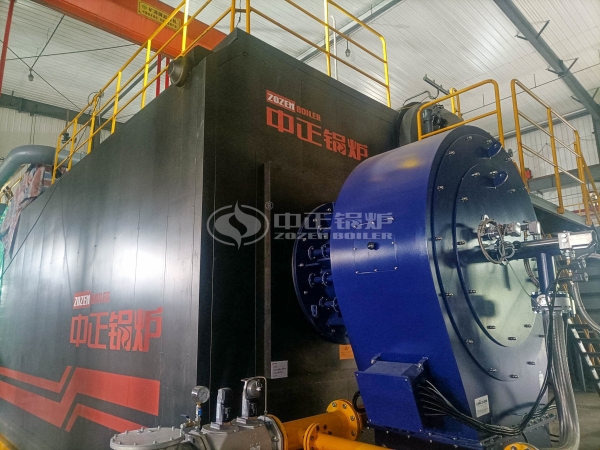
types of water tube boiler— ZOZEN D-type water tube boiler
What are the key advantages of the D-Type Boiler Structure?
The D-type boiler layout positions the furnace on one side of the double vertical tubes, while the other side houses the convection flue. With large water capacities in the upper and lower vertical tubes, this design exhibits excellent adaptability to load variations. The flexible bent water tubes in the convection tube bundle enhance structural resilience, contributing to higher thermal efficiency. However, ash accumulation between convection tube bundles poses a risk to efficiency, requiring strict water quality control to prevent scale buildup.
How does the KB-Type Water Tube Boiler differ in structure?
As one of types of water tube boilers, KB-type water tube boiler comprises upper and lower vertical tubes, convection tube bundles, water-cooled wall tubes, headers, and downcomers as its key pressure-bearing components. With the lower drum shorter than the upper drum, leaving space for the furnace between the drums, this design incorporates bent water tubes connecting the upper and lower sections, surrounded by water-cooled wall tubes. Notably, the KB-type boilers often feature chain grate stokers or coal throwers with an economizer at the exhaust end.
What distinguishes the water circulation system in KB-Type Boilers?
The water circulation in KB-type boilers involves two distinct pathways: one where water from the weakly heated rear convection tube bundle in the upper drum descends to the lower drum and then ascends through the strongly heated front convection tube bundle, completing the cycle. The second pathway involves water from the water-cooled wall tubes around the furnace ascending to the upper drum, with downcomers drawing water from the lower drum to supply the water-cooled wall tubes, establishing a continuous water circulation.
Conclusion:
In conclusion, the D-type and KB-type water tube boilers each offer unique structural advantages and considerations, catering to diverse industrial requirements. ZOZEN Boiler‘s commitment to innovation and excellence shines through in these meticulously designed boiler systems, ensuring optimal performance and efficiency across various industries.


